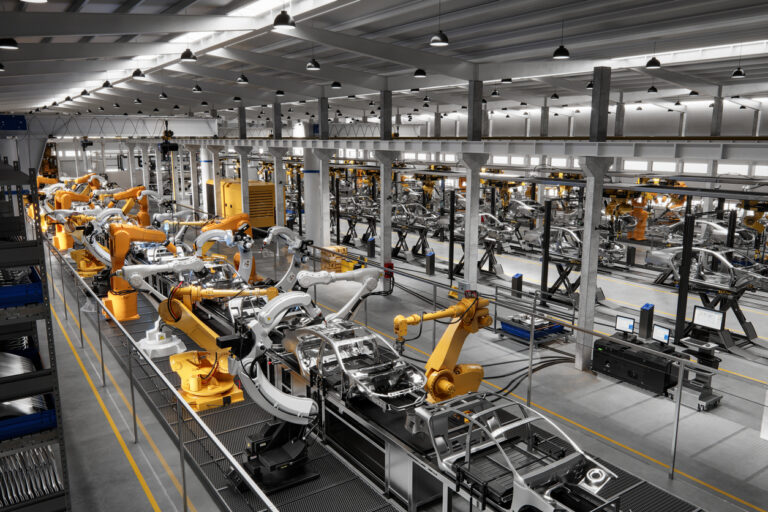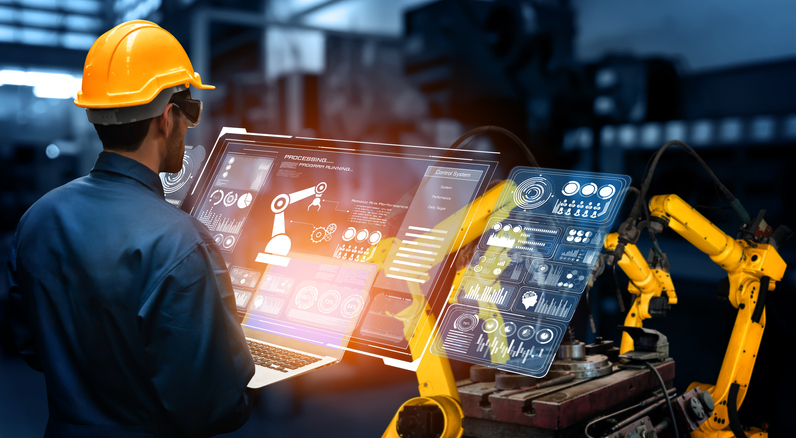In today’s rapidly advancing world, industries are seeking innovative solutions to enhance their quality control processes. One such groundbreaking approach is Automated Surface Inspection. By integrating advanced technologies, industries can now achieve unprecedented levels of precision and efficiency. This article delves into the intricacies of Automated Surface Inspection, its significance, and its transformative impact on quality control.

Understanding Automated Surface Inspection
Automated Surface Inspection refers to the use of advanced technologies to examine and analyze the surface quality of products. It involves the deployment of AI-powered systems that can detect defects, irregularities, and inconsistencies on surfaces, ensuring that products meet the highest quality standards. This method is particularly beneficial in industries where surface quality is paramount, such as automotive, electronics, and aerospace.
The Importance of Surface Quality
Surface quality plays a critical role in determining the overall quality and functionality of a product. Imperfections on a product’s surface can lead to operational inefficiencies, reduced durability, and compromised safety. Therefore, maintaining impeccable surface quality is essential for industries aiming to deliver superior products.
The Technology Behind Automated Surface Inspection
The core of Automated Surface Inspection lies in its cutting-edge technology. These systems utilize machine learning algorithms, computer vision, and high-resolution cameras to accurately assess surface conditions. By capturing detailed images and analyzing them in real-time, these systems can identify even the minutest defects that might be overlooked by human inspectors.
Machine Learning and AI
Machine learning algorithms are integral to Automated Surface Inspection systems. These algorithms are trained on vast datasets to recognize patterns and anomalies, enabling the system to make precise assessments. With continuous learning, these systems become more adept at identifying defects, leading to improved accuracy over time.
Computer Vision
Computer vision technology empowers Automated Surface Inspection systems to analyze visual data with remarkable precision. By interpreting images captured by high-resolution cameras, these systems can detect defects, measure dimensions, and assess surface textures. This technology ensures that no defect goes unnoticed.
Benefits of Automated Surface Inspection
The adoption of Automated Surface Inspection offers numerous benefits to industries striving for excellence in quality control. Here are some key advantages:
Enhanced Accuracy and Consistency
Automated Surface Inspection systems provide unparalleled accuracy and consistency in defect detection. Unlike human inspectors, who may experience fatigue and variability, these systems deliver reliable results consistently, ensuring that every product meets the desired quality standards.
Increased Efficiency and Productivity
By automating the inspection process, industries can significantly increase their efficiency and productivity. Automated Surface Inspection systems operate at high speeds, inspecting surfaces swiftly and reducing the time required for quality assessments. This efficiency translates into faster production cycles and increased output.
Cost Savings
Implementing Automated Surface Inspection can lead to substantial cost savings. By minimizing defects and reducing rework, industries can lower their operational costs. Additionally, the early detection of defects prevents the production of faulty products, reducing warranty claims and associated expenses.
Applications of Automated Surface Inspection
Automated Surface Inspection finds applications across various industries, each benefiting from its precision and efficiency:
Automotive Industry
In the automotive sector, surface quality is crucial for both aesthetics and functionality. Automated Surface Inspection ensures that car parts, such as body panels and interiors, are free from defects, enhancing the overall quality of vehicles.
Electronics Manufacturing
The electronics industry demands impeccable surface quality to ensure the performance and reliability of devices. Automated Surface Inspection systems detect defects on circuit boards, displays, and other components, guaranteeing optimal functionality.
Aerospace Industry
In the aerospace sector, safety is paramount. Automated Surface Inspection plays a vital role in detecting surface irregularities on aircraft components, ensuring that they meet stringent safety standards and perform flawlessly.
Challenges and Solutions
While Automated Surface Inspection offers numerous benefits, it also presents certain challenges. However, with the right strategies, these challenges can be effectively addressed.
Data Management and Analysis
The vast amount of data generated by Automated Surface Inspection systems can be overwhelming. To tackle this, industries can implement robust data management and analysis solutions. By leveraging advanced analytics, they can extract valuable insights and make informed decisions.
Integration with Existing Systems
Integrating Automated Surface Inspection with existing manufacturing systems may pose challenges. However, partnering with technology providers who offer seamless integration solutions can simplify the process and ensure a smooth transition.
The Future of Automated Surface Inspection
The future of Automated Surface Inspection is promising, with ongoing advancements in technology driving further improvements. Industries can expect even greater accuracy, speed, and versatility in defect detection. Additionally, the integration of AI and IoT will enhance the capabilities of these systems, enabling predictive maintenance and real-time monitoring.
For more insights on how AI is transforming manufacturing, you can visit SAP’s AI in Manufacturing.
Conclusion
Automated Surface Inspection is revolutionizing quality control in industries worldwide. By harnessing advanced technologies, these systems deliver unmatched precision, efficiency, and cost savings. As industries continue to embrace automation, Automated Surface Inspection will play an increasingly vital role in ensuring the delivery of high-quality products that meet the demands of a competitive market.

FAQs
1. What is Automated Surface Inspection?
Automated Surface Inspection is a technology-driven process that uses AI and computer vision to assess the surface quality of products, detecting defects and irregularities to ensure high-quality standards.
2. How does Automated Surface Inspection benefit industries?
It enhances accuracy, increases efficiency, and reduces costs by automating the detection of surface defects, leading to improved product quality and reduced operational expenses.
3. What industries can benefit from Automated Surface Inspection?
Industries such as automotive, electronics, and aerospace can significantly benefit from Automated Surface Inspection by ensuring defect-free products and maintaining high safety and performance standards.
This article contains affiliate links. We may earn a commission at no extra cost to you.

